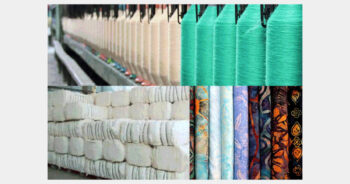
Apparel Export Promotion Council (AEPC) has flagged to the Government the continuous increase in the cost of raw material, such as cotton yarn which is critical to the apparel industry. The price of cotton yarn which was around 376 Rs/kg in March 22’ rose to 406 Rs/kg in April 22’ and further to 446Rs/kg as on May 22’ demonstrating an increase of 10 percent. In the past 18 months, this hike in the prices of the yarn has been to the tune of about 100 percent, rising from 200 Rs/kg to Rs 446/kg.
On behalf of the apparel Industry, AEPC has requested the government to take immediate measures, so that the RMG export target of $20 bn for the year 2022-23 is met.
Commenting on the rise in price of raw material, Narendra Goenka, Chairman AEPC, said, “The apparel industry has been working very hard to achieve the set export target of $20 bn for the year 2022-23. With export orders in hand, the industry is making efforts to increase its production capacity, however, this continuous increase in the cost of raw material has impacted the entire apparel value chain and has led to increase in the garment price. The apparel exporters have been facing a lot of resistance by the buyers towards placing new orders due to this continuous increase.”
Further Chairman stated, “India is already losing out to its competitors in Bangladesh, due to their FTAs in markets like the EU. The prevailing high prices will only result in increasing the competitiveness gap of India viz-a-viz our competing countries, diverting global orders to our competing countries, along with the associated jobs and domestic value addition potential.”
The Apparel Industry is grateful for the government’s proactive approach of waiving custom duty on cotton imports from April till September this year. It was expected that this reduction in import duty will benefit the textile industry and keep prices low for cotton and subsequently cotton yarn for the apparel industry. However, the industry would like to bring to your urgent notice that instead of the expected decline in the prices of cotton yarn, the prices of the same have been facing continuous increase in the past few months.
Goenka added that, “The price realisation and foreign exchange of the garment exports as value added product is much higher than that realised from raw material exports (Export of raw cotton fetches approx. Rs 275 per kilo; converted to yarn it fetches approx. Rs. 400 rupees a kilo. Whereas a kilo of garments exported with all its value additions can fetch approximately Rs 1200 rupees a kilo.) Thus, in terms of value addition and employment generation, the apparel sector is far ahead of any other segment of the Textile chain.”
Chairman AEPC requested the government that it should encourage exports of value-added products like apparel instead of exporting raw material like cotton and cotton yarn. Since most of the units operating in the apparel sector are MSMEs and provide employment to predominantly women workers and migrant labourers, this will lead to employment generation and creation of value addition in the country.
“With your timely and stern intervention on controlling the ever-rising yarn price, will help us to achieve the export target close to $20bn and doubling exports by 2027,” Chairman AEPC noted.





















